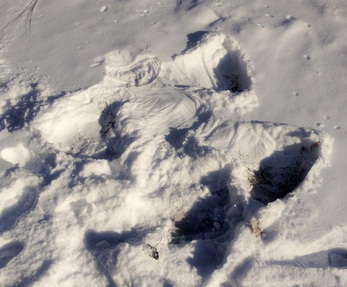
According to the National Weather Service, wind chills will bring temperatures 10 to 15 degrees below zero with wind gusts of up to 35 mph. A chance of snow showers of less than 1 inch is also possible.
Stay indoors as much as possible, but if you must venture outdoors, the Health Department offers these tips for dealing with the cold:
- Make sure you dress properly. Wear several layers of loose-fitting, lightweight, warm clothing rather than one layer of heavy clothing. Wear mittens, which are warmer than gloves, and wear a hat because you can lose as much as 50 percent of your body's heat through the head. Cover your mouth with a scarf to protect your lungs.
- Watch for signs of frostbite and hypothermia, the dangerous and sometimes fatal lowering of body temperatures. Frostbite includes loss of feeling and white or pale appearance in extremities such as fingers, toes, ear lobes, and the tip of the nose. Symptoms of hypothermia include uncontrollable shivering, memory loss, disorientation, incoherence, slurred speech, drowsiness and apparent exhaustion.
- Frostbite can occur within 30 minutes at a wind chill temperature of -19, within 10 minutes at -33 and within five minutes at -48. Cover as much skin as possible to guard against frostbite. The nose, cheeks, ears, fingers and toes are most vulnerable. Wind and precipitation raise the risk of frostbite. Call for emergency medical assistance in case of hypothermia or frost bite.
- Avoid alcohol and caffeinated beverages because they cause the body to lose heat more rapidly. Instead, drink warm, sweet beverages, broth or soup to maintain body temperature.
Like Ambridge Connection on Facebook, follow us on Twitter and sign up for our weekly newsletter.




 RSS Feed
RSS Feed